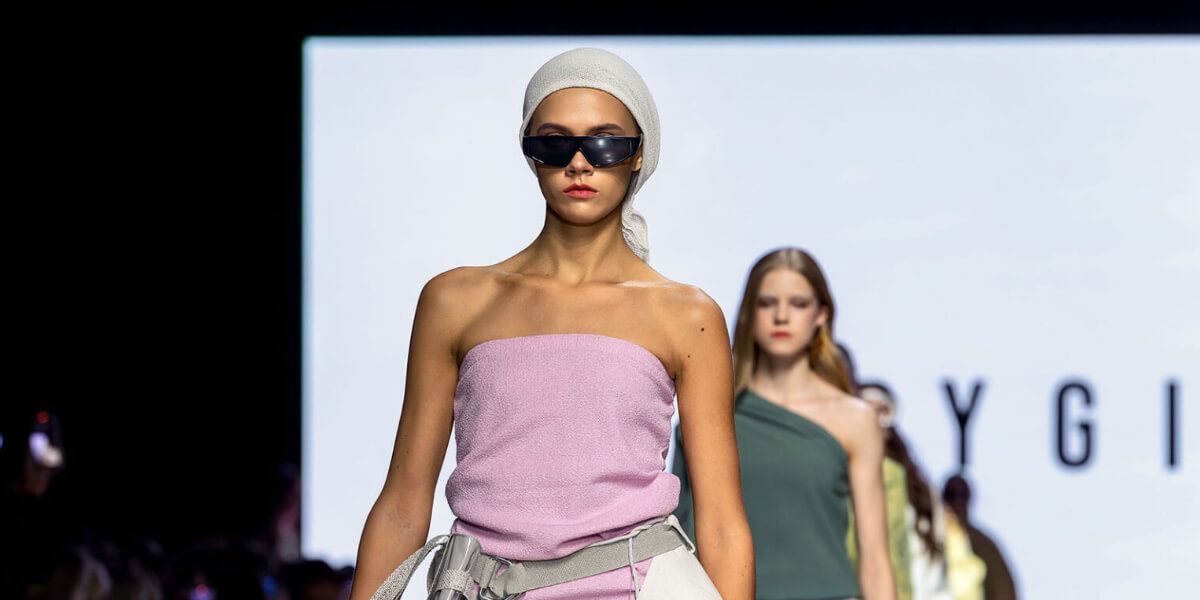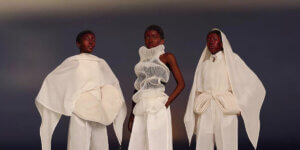1. SZCZYGIEŁ (POLAND)
In conversation with the zeitgeist of fashion, the polish designer Szczygiel reviewed the rising appeal of the avant-garde by applying experimental forms and patterns to the constant elements of ready-to-wear. While the collection was mostly defined by earth tones, at Szczygiel, there was more to do with the earth: through the use of deadstock materials, including leather and linen, the brand located upcycling practices in its core.
2. TREIMANE STUDIO (LATVIA)
At the heart of Treimane Studio, a cultural narrative built in quite a provocative and kitschy lens welcomes us. Transforming traditional Latvian patterns and upcycling the old fabrics into modern and sexy silhouettes through the use of mix & match, the collection proved how nostalgia can be sexy in the contemporary context.
3. POHJANHEIMO (ESTONIA)
Paying homage to the ultimate Baltic color palette, Estonia-based Pohjanheimo chose the shades of blue and white as its playground. While redefining the “ladylike” in a bolder way by the use of transparent pieces and material contrasts, the actual center of attention was high-quality fabrics, all sourced across Europe. According to the designer, the Pohjanheimo woman is somebody who doesn’t need to prove anything, and this silently luxurious collection was nothing but a confirmation of it.
4. KESTAS RIMDZIUS (LITHUANIA)
Presenting a compilation of it-pieces for the fashionable Baltic woman, this collection by Kestas Rimdzius chose to experiment a bit with materials. Taking advantage of black’s never-ending elegance, most of the looks were reinventions of the contemporary Baltic style: forms that are familiar in many post-soviet fashion brands met nordic vibrancy, and this eventually redefined what Baltic style stands for.
5. NORA ISLE (ESTONIA)
This Estonian designer’s biggest power was understanding the trends and reviewing them in her own language. As we all witness the hegemony of tailoring nowadays, Nora Isle’s flipper-inspired touch on such pieces was a softening catalyst on today’s sculptural silhouettes. With her focus on turning basics into glamorous pieces, a wide range of different garments were present, all being intriguing.
6. MOEL BOSH (UZBEKISTAN)
Expanding its lens beyond the Baltics, Riga Fashion Week hosted some brands from Uzbekistan, too, including Moel Bosh. Drawing on Central Asian embroidery and flamboyant textiles of the region, Moel Bosh presented an alternative way to be stylish in the ongoing Eurocentric fashion sense worldwide. While these tradition-derived garments were matched with mainstream pieces, a Eurasian fusion of style was envisioned by the brand.




























